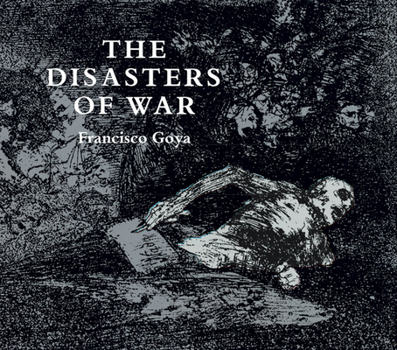The Disasters of War
Select Format
Select Condition 
Book Overview
The strikingly original characterizations and sharply drawn scenes that came to be known posthumously as Los Desastres de la Guerra (The Disasters of War) are among Francisco Goya's most powerful works and one of the masterpieces of Western civilization. Goya's model for his visual indictment of war and its horrors was the Spanish insurrection of 1808 and the resulting Peninsular War with Napoleonic France. The bloody conflict and the horrible famine of Madrid were witnessed by Goya himself, or were revealed to him from the accounts of friends and contemporaries. From 1810 to 1820, he worked to immortalize them in a series of etchings. The artist himself never saw the results. The etchings were not published until 1863, some 35 years after his death. By then, the passions of the Napoleonic era had subsided and the satirical implications in Goya's work were less likely to offend. The Dover edition reproduces in its original size the second state of this first edition, which contained 80 prints. Three additional prints not in the 1863 edition are also included here, making this the most complete collection possible of the etchings Goya intended for this series. The bitter, biting captions are reprinted, along with the new English translations, as are the original title page and preface.
Format:Paperback
Language:English
ISBN:0486218724
ISBN13:9780486218724
Release Date:June 1967
Publisher:Dover Publications
Length:112 Pages
Weight:0.65 lbs.
Dimensions:0.3" x 9.4" x 8.2"
Age Range:12 to 17 years
Grade Range:Grades 7 to 12
Customer Reviews
4 ratings
Still timely art from 2 centuries past
Published by Thriftbooks.com User , 16 years ago
As an artist and print maker I can admire Goya's mastery of the media.This book allows people who may not be familiar with Goya's etchings a sense of how powerful and timely these prints are even after 200 years. I was fortunate to see the complete series of these etchings last summer at Syracuse University.I'm sure Goya would see the brutality of war that America is currently engaged in.
Timeless
Published by Thriftbooks.com User , 17 years ago
When I look at these prints, I am reminded of: the "contractors" whose dismembered bodies were hung from the bridge in Fallujah; the lynching postcards that were commonly mailed around the USA only a few generations ago to celebrate the murder of black men; Auschwitz; All Quiet on the Western Front; Sherman's March; the Trojan War; you get the idea. Unfortunately these powerful images are and shall remain contemporary. There is some topical political comment here, but you're mostly looking at the human condition, and with a few changes of costume and props, these prints are applicable to almost any conflict, anywhere. Good for the kids' room.
Brings the reader to the batlle field
Published by Thriftbooks.com User , 18 years ago
The Disasters of war is a difficult book to read, containing the most impressing pictures of war and its consequences. The black/white drawings are as real as life itself, and sometimes even more! Goya depicts tortures made on public squares, people starving to death, and warriors fighting. But the most amazing is the vividness and actuality of the pictures. The Disasters of war is like a poetry book, it has no time, and no defined significance; it can be interpreted in infinite different ways and it is always an up-to-date work. In my view, one of the best ways to fight war is using art. War leads on to war, art leads on to art. Understanding what and how war happens is essential in order to fight it (I excluded Why since I believe there is no explanation for it). This book shows the What perfectly. I have written a review of the book 'Why?' by Nikolai Popov which is about the How.
15th century demons from hell
Published by Thriftbooks.com User , 24 years ago
Like most dover press books, we have here a wonderful bargain: clear reproductions and good paper stock. Goya was a court painter trying to please his patrons, but in this series of etchings, he indulged his twisted soul in the first recorded anti war propaganda. These etchings are both lovely in their technique and horrifying in their imagery.





